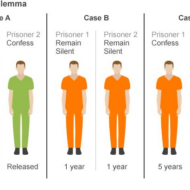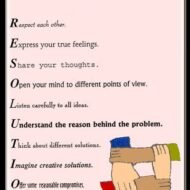Posted by Managementguru in Human Resource, Leadership, Motivation
on Mar 17th, 2015 | 0 comments

6 Things a Manager Can Learn From MS Dhoni Leading from the front Staying cool Sharing the due credit with fellow-men Encouraging team members to make them better performers Staying Grounded Resource Utilization No, this article is certainly not about our Indian Cricket team’s captain; but he has a lot to offer to prove my point. Yes, I was contemplating about the various leaders- both in the political and economic sectors and how their attitude and perspective has a direct effect on the followers or sub-ordinates. I thought it would be good to start from M.S.Dhoni, the all powerful leader in his own way standing tall and cool. Don’t miss this powerpoint: The powerpoint given here depicts the different leadership styles pertaining to an organization – be it business, service, non-profit or educational. The motive may differ for each of the listed organizations above but all have to function effectively to reach that ulterior motive. There can’t be a second thought or opinion on this and how the emotional quotient of a leader impacts employee motivation and engagement is something phenomenal. It is directly evident from the functioning style of the employees and their attitude even when you just enter an organization. The impact of leadership styles on employee motivation and performance from Shyama Shankar My Bad Encounter: Recently I had been to a dermatologist for a consultation and even before I could inquire about the doctor’s availability, the girl at the front desk was very particular to know if I would be willing to pay three hundred bucks. I was taken aback to know that the fee was two hundred bucks for visiting during regular hours and three hundred for late hours (It was a sunday and late hours meant visiting the doctor after 12 noon). The hundred rupees did not matter to me at all but the way in which the man has trained his staff to put the patients into an uneasy position made me think – “Where service has to be the motto of his profession, money has REWRITTEN the ETIQUETTES in it own cruel way.” Matched Leadership: How to Use Leadership Styles Effectively Leadership style is one of the most debated topics in management which has influenced a great number of managers and employees. Leadership style extensively influences employee’s commitment and dedication. A participative and democratic kind of leader creates a positive work atmosphere, a coercive leader creates an unbalanced and negative atmosphere; nevertheless all kinds of leaders create a serious impact whether negative or positive. Transformational leaders provide a vision and a sense of mission, inspire pride, and gain respect and trust through charisma, as opposed to a simple exchange and agreement,(Bass et al.1990) whereas Transactional leaders communicate with their subordinates to explain how a task must be done and let them know that there will be rewards for a job done well (Avolio et al.1991). Laissez-faire leadership is a passive kind of leadership style, seen as not caring about other’s issues. There is no relationship exchange between the leader and the followers. It represents a non-transactional kind of leadership style in which necessary decisions are not made, actions are delayed, leadership responsibilities ignored, and authority unused. Now it is time to enjoy some funny quotes on Leadership: Only one man in a thousand is a leader of men — the other 999 follow women. Groucho Marx First rule of leadership: everything is your fault. A Bug’s Life The problem with being a leader is that you’re never sure if you’re being followed or chased. Claire A. Murray The key to being a good manager is keeping the people who hate me away from those who are still...

Posted by Managementguru in Business Management, Marketing, Operations Management, Principles of Management, Strategy
on Mar 16th, 2014 | 0 comments

Game theory and strategy What is Game Theory: Set of concepts designed for decision making in situations of competition and conflict under specified rules. The prisoner’s dilemma: The prisoner’s dilemma is a canonical example of a game, analyzed in game theory that explains why two individuals might not cooperate, even if it appears that it is in their best interest to do so; Albert W. Tucker formalized the game with prison sentence payoffs and gave it the “prisoner’s dilemma” name. To solve many practical problems that are encountered in economic, military or other disciplines, one has to deal with situations in which there are two or more conflicting parties striving for the same objective and the outcome of each action of one party depends solely on the opposite parties choice of a course of action. As we all know only one horse can win the race ultimately and the other parties only can prolong the race or see to that they make every possible move to delay the opponent’s success. So, what’s this game theory all about? This is a special mathematical method that was evolved mainly to analyze conflict situations where the number of competitors is finite, each participant has a definite set of actions to choose and there is a conflict of interest between the competitors. So it helped the participants to reach a decision that would put them in the winning post. This theory has spilled its implications on business situations where success is the motto and conflict and competition the order of the day. Only the best among the best survive. Darwin’s theory, “Survival of the fittest” applies not only to biological organisms but also to business organizations which are also abuzz with activity. Chance Moves: Games like chess, checkers are played according to a definite set of rules laid down and these game patterns has inspired business persons to introduce strategies in business, where the concentration is mainly focused on the chance moves that defeats the opponent. Big business corporates mainly concentrate on the strengths and weaknesses of their competitors to have an edge over them. A real game is controlled and regulated by the statutory rules to be followed but a business game involves lot of killer instincts and intuitions combined with rational thinking and logic. Optimal Strategy: The first party always puts himself in the shoes of the other party and tries to perceive how the other party would react in a particular situation. Although the aim is to win, choosing the optimal strategy is what matters. It will at least keep you in bay. Precise solutions can be arrived at if you plan your game fittingly. The anticipation and thrill that is involved in a strategic game is matchless. We witness a lot of firms imitating what the leader of the market does. The risk is borne solely by the firm introducing the change and the firm takes the major share of profit as it is the pioneer and if it loses the next strategic move is planned for. For a company with sound financial position, the chance move is worth giving a try, head or tail doesn’t matter. The stalkers are benefited by the waiting period during which they come to know of the pros and cons of the strategy employed by the leader. Games are played in the true spirit of sportsmanship, but a business faces cut throat competition. There is no space for any courtesy or liberal approach. If you are quick enough to pick the pulse of the people by gauging their preferences, analyzing the market conditions and employing timely strategies you will at...

Posted by Managementguru in Human Resource, Organisational behaviour, Principles of Management
on Feb 28th, 2014 | 0 comments

An Open Frame of Mind: Line and staff authority should be open with each other and come out of their compartmentalized state of mind. Rationale thinking and logical action is what is required to understand and resolve conflicts.Be a Manager rather than a Technocrat: Specialization has made people to stick to their line of action and they act merely like tech wizards and conveniently forget the human element of flexible mental purview and compromise. Development of each individual’s managerial qualities will minimize conflicts. A manager has to harmonize functions of diverse natures and bring about co-ordination.Think as an Entrepreneur: Thinking about the strength, weaknesses, opportunities and threats an organization faces makes each individual realize that he or she is part of the organization and whatever happens to the firm directly affects his/her stability and security.Make others feel a Sense of Achievement: It is the job of a manager to appreciate and encourage the achievements of his sub ordinates that bring greater joy in the minds of individuals and motivate them to work for the cause.Interaction among Functions: Cross functional interactions on a continuous basis are found to be useful in preventing and resolving conflicts. Informal groups serve as the best example of a committee consisting of members from different functional groups but with a common interest. These groups can be best identified and utilized by the management to resolve conflicts by seeking the help of the key person in the group.Roles, Responsibilities and the Scope of other Functions: The basic requirement is to first clearly define the objectives and sub objectives, the process, the roles of each function as a tool and their rights and responsibilities. One should know the roles and responsibilities of all functions having common interface: their position in the firm as well as their relevance and contribution towards the organizational goals.Communication and Information Sharing: The informal communication system helps in achieving group dynamics and cohesion while the formal channels take care of organizational directives. A quick and effective means of communication can considerably reduce the conflict level that arises out of communication disorders.Adequate Planning and Co-ordinations: At each operational level, hasty actions must be avoided to stop conflicts from arising. Planning and Co-ordination go hand in hand: Say, if a new product launch is aimed at without proper promotion, what would happen to the success of the project?Evaluation of Functional Performance: A standard mechanism must be set to evaluate managerial performance in terms of their ability to achieve an integrated set of objectives in a balanced manner.Necessity of Transparency: Transparency is needed at all functional levels or the initiator appears to be tainted with the accusation of having an ulterior motive. In case of big corporate firms all the policy decisions are taken by the board and not by a single person to avoid conflicts. Conflict need not necessarily be viewed as an evil but a disorder to be curbed. Sometimes a conflict might showcase the inherent inflexibility and malfunctions in the firm to be corrected paving way for innovations. Sometimes it causes frustration for the management by preventing synergy amongst the sub-systems. All said and done, conflict once identified have to be immediately dealt with and resolved by the management in order to facilitate smooth functioning of the...






